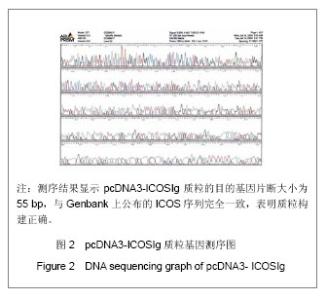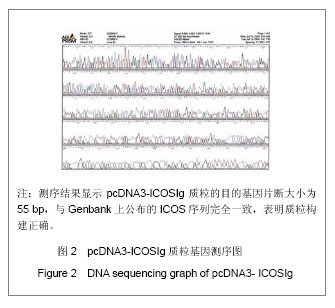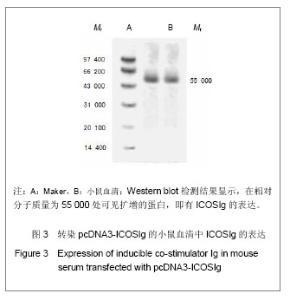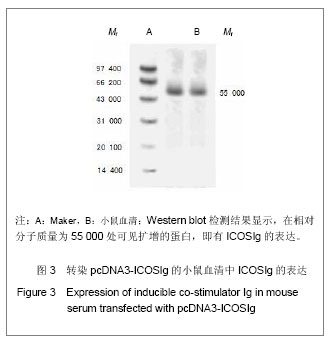| [1] |
Dai Yaling, Chen Lewen, He Xiaojun, Lin Huawei, Jia Weiwei, Chen Lidian, Tao Jing, Liu Weilin.
Construction of miR-146b overexpression lentiviral vector and the effect on the proliferation of hippocampal neural stem cells
[J]. Chinese Journal of Tissue Engineering Research, 2021, 25(19): 3024-3030.
|
| [2] |
Liu Hao, Liu Jun, Rui Yongjun, Tang Fenglin, Lu Miao, Ding Tao.
Co-transfection by Nell-1 and Noggin-shRNA promotes osteoblast differentiation of adipose derived mesenchymal stem cells
[J]. Chinese Journal of Tissue Engineering Research, 2020, 24(31): 4966-4970.
|
| [3] |
Wang Wenhong, Li Yanjun, Cui Caiyun.
Factors influencing differentiation of stem cells from the apical papilla into odontoblasts
[J]. Chinese Journal of Tissue Engineering Research, 2020, 24(31): 5071-5078.
|
| [4] |
Wang Ning, Chen Junyi, Zhu Lunjing, Duan Jiangtao, Wang Ye, Li Zhijun, Bei Chaoyong.
Lentivirus-mediated P75 neurotrophin receptor silencing combined with nerve growth factor overexpression promotes proliferation of rat bone marrow mesenchymal stem cells
[J]. Chinese Journal of Tissue Engineering Research, 2020, 24(25): 3988-3993.
|
| [5] |
Zou Gang, Zhang Jun, You Qi, Tang Jingfeng, Jin Ying, Yang Jibin, Zhu Xizhong, Liu Yi.
Scleraxis lentivirus-transfected human amniotic mesenchymal
stem cells promote tendon-bone healing in rabbits
[J]. Chinese Journal of Tissue Engineering Research, 2020, 24(13): 2080-2086.
|
| [6] |
Li Bo, Lin Jie.
Three-dimensional liver reconstruction provides a more
accurate preoperative assessment of tumor size than traditional CT imaging
technique
[J]. Chinese Journal of Tissue Engineering Research, 2020, 24(11): 1726-1732.
|
| [7] |
Sun Li, Zong Yanyan, Wei Jianfeng.
Comparison of two passage methods affecting the transfection
efficiency of human embryonic stem cells
[J]. Chinese Journal of Tissue Engineering Research, 2020, 24(1): 72-76.
|
| [8] |
Xu Huijun, Shi Dongmei, Zhang Mi, Wu Saixuan, Dong Ming, Lu Ying, Niu Weidong.
Effect of sex combing protein 1 on proliferation and
differentiation of osteoblasts in inflammatory microenvironment#br#
[J]. Chinese Journal of Tissue Engineering Research, 2020, 24(1): 130-135.
|
| [9] |
Zhang Yingying, Wang Yinglei, Meng Lin, Xiao Lin, Li Zhonghai, Zhao Zhankui, Wu Houke.
RNA interferes with Id2 gene expression to inhibit proliferation and invasion of PC-3 prostate cancer stem cells
[J]. Chinese Journal of Tissue Engineering Research, 2019, 23(9): 1342-1348.
|
| [10] |
Han Mingli, Lü Pengwei, Qian Xueke, Yang Xue, Yang Yunqing, Gu Yuanting.
MicroRNA-10b regulates aldehyde dehydrogenase 1 mRNA and protein expression in breast cancer MCF-7 cell line
[J]. Chinese Journal of Tissue Engineering Research, 2019, 23(9): 1349-1353.
|
| [11] |
Gao Jianjun, Qin Wei, Wang Hao, Zhong Xiangyu.
Application and prospect of organoid technique in cancer research
[J]. Chinese Journal of Tissue Engineering Research, 2019, 23(7): 1136-1141.
|
| [12] |
Wang Yang, Nie Jinshan, Gu Zhun, Zhu Kai.
Construction and in vitro evaluation of a biodegradable cationic gene delivery system based on hyperbranched polyamidoamine
[J]. Chinese Journal of Tissue Engineering Research, 2019, 23(6): 936-944.
|
| [13] |
Zha Luqin, Han Bengao, Zhang Chaojie.
Metformin regulates proliferation and apoptosis of gastric cancer stem cells through the Akt pathway
[J]. Chinese Journal of Tissue Engineering Research, 2019, 23(5): 657-662.
|
| [14] |
Feng Haipeng, Zheng Yifei, Zhou Ying, Li Zhilu, Sun Yan, Liu Kun, Zhang Ruizhu, Wang Qiaoyun, Meng Bo, Lin Bo, Li Mengsen.
Inhibition of GATA5 expression in HELA cells promotes expression of sox2, c-myc and CD44 in HELA cells
[J]. Chinese Journal of Tissue Engineering Research, 2019, 23(5): 710-715.
|
| [15] |
Ma Yuegang, Li Qiang, Tao Xuan, Zhou Zhenjie, Zhu Lunjing, Duan Jiangtao.
Bone marrow mesenchymal stem cells co-transfected by lentivirus-mediated bone morphogenetic protein 2 and vascular endothelial growth factor 165 in combination with demineralized bone matrix for treating rabbit femoral head necrosis
[J]. Chinese Journal of Tissue Engineering Research, 2019, 23(33): 5275-5280.
|



